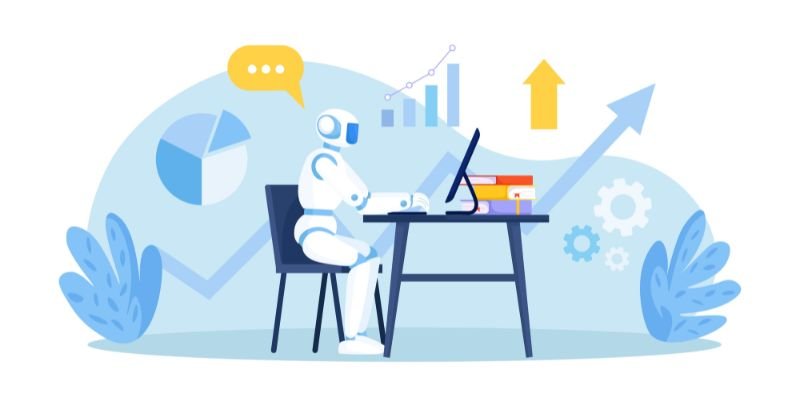Have you seen those AI performance marketing automation tool cheat sheets flooding LinkedIn lately? They list dozens of tools promising to revolutionize your marketing, but the real question is, do they actually help? Or is AI just another buzzword that sounds good in investor meetings but does little for real results?
At Infiniqe, we have tested countless AI tools, and the takeaway is simple. AI in performance marketing is not about automating everything blindly. It is about knowing what to automate, what to optimize, and what still needs a human touch.
There is a quote that stuck with me from Ethan Mollick’s book Co-Intelligence: Living and Working with AI. He said, “AI is not a replacement for thinking. It is an accelerator of it.” That line hit home. We tried a new AI-powered campaign testing process, expecting it to do the heavy lifting, but it only worked when we fed it good data and clear goals. AI is a force multiplier, not a magic wand.
So, let’s break it down. Where does AI genuinely add value in performance marketing automation? And more importantly, how do you use it without losing control?
AI in Performance Marketing: The Good, The Bad, and the Hype

AI in marketing is not new. Google has been using machine learning for ad bidding for years. Facebook (or Meta) has its AI-driven ad targeting that gets smarter the more you use it. But today’s AI goes beyond that. Now, we have AI that writes, tests, optimizes, and even predicts campaign outcomes before you launch.
What AI Does Well
- Ad Creative Optimization – AI tools like Persado and AdCreative.ai analyze what works and generate headlines, ad copy, and visuals that convert better.
- Audience Targeting & Segmentation – Meta’s AI-driven audience expansion or Google’s Performance Max uses machine learning to find the right people.
- Automated Bidding & Budgeting – Google’s Smart Bidding and Meta’s Advantage+ use real-time data to adjust bids for the highest ROI.
- Predictive Analytics & Insights – AI-powered tools analyze data patterns to predict which campaigns will perform best before you even run them.
- Chatbots & Lead Nurturing – AI-powered chatbots engage leads instantly, answering questions and qualifying them before they talk to a human.
Where AI Falls Short
- It Needs Good Data – AI can only work with the data you feed it. If your tracking and attribution are weak, your AI-driven insights will be useless.
- It Lacks Human Creativity – AI can optimize, but it cannot come up with groundbreaking creative ideas. That still requires people.
- It Can Be a Black Box – Automated bidding and AI-driven targeting are powerful, but sometimes, it is hard to understand why AI made certain choices.
The Fictional Story That Explains It All

Let’s say you run a high-end fitness brand selling premium supplements. Your competitor is crushing it with AI-driven ad campaigns, and you feel behind. So, you invest in a full AI-powered ad system.
Your AI tools start running Meta Ads, optimizing budgets, tweaking creatives, and scaling based on conversion data. For the first few weeks, sales are rolling in. The AI finds that people over 40 are converting at a higher rate, so it shifts the budget to target them more aggressively.
Sounds great, right? Except, you start noticing a problem. Your brand was built for younger fitness enthusiasts. Sure, older buyers are converting now, but they are not coming back. Your brand reputation is shifting, and your core audience is dropping off.
That is when you realize AI optimized for the wrong outcome. It saw short-term conversions but did not account for long-term brand loyalty.
This is what AI cannot do—it cannot think long-term like a marketer.
How to Use AI Smartly in Performance Marketing

Now that we have seen the pitfalls, how do you use AI to enhance your performance marketing without losing control?
1. Let AI Do the Heavy Lifting, But Keep Humans in Control
- Use AI for automating repetitive tasks like ad creation, A/B testing, and budget allocation.
- Keep humans in charge of strategy, creative vision, and big-picture decision-making.
2. Set AI Up for Success With the Right Data
- AI is only as good as the data it gets. Ensure you have strong tracking, clear attribution, and a well-defined goal before letting AI take over.
- Use first-party data to train AI models for better customer targeting.
3. Blend AI Optimization With Human Creativity
- Let AI help you generate multiple ad variations, but pick the final creatives based on human intuition and brand fit.
- Use AI insights to guide creative strategy, but do not let it dictate your entire campaign direction.
4. Balance Short-Term Gains With Long-Term Brand Growth
- AI loves immediate conversions, but as we saw in the fitness brand story, not all conversions are good for long-term growth.
- Adjust AI campaigns to focus on customer lifetime value (CLV) rather than just first-purchase conversions.
5. Test, Measure, and Adjust
- AI is great at analyzing patterns, but those patterns change. Do not assume what works today will work forever.
- Regularly audit AI-driven campaigns and make manual adjustments where needed.
The Best Marketing Advice: Use AI, But They Don’t Rely on It Blindly
The best performance marketers are not asking if they should use AI. They are asking how to use it wisely. AI is a powerful tool, but like any tool, it works best when it is used intentionally.
- Use AI to automate, analyze, and optimize, but keep strategy and creative decisions in human hands.
- Always monitor AI-driven campaigns to ensure they align with long-term business goals.
- Keep testing, iterating, and refining. AI is only as good as the marketer who wields it.
At Infiniqe, we use AI to make performance marketing smarter, not robotic. If you want AI-powered campaigns that actually work, let’s chat.
